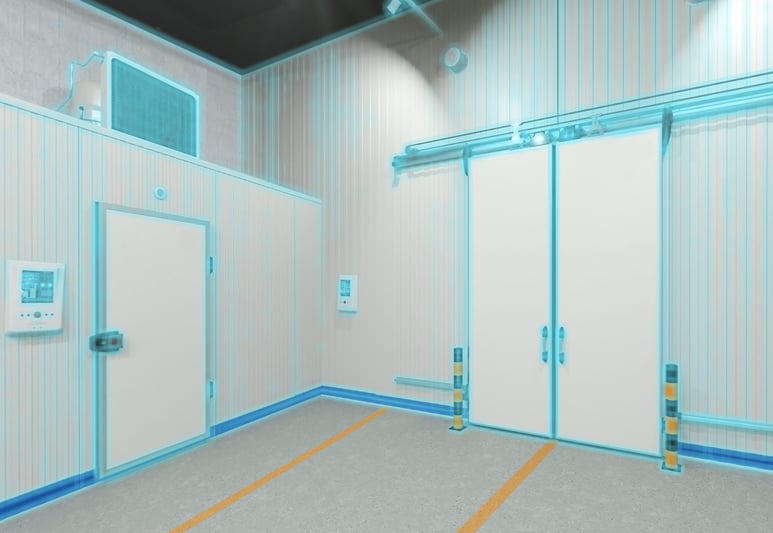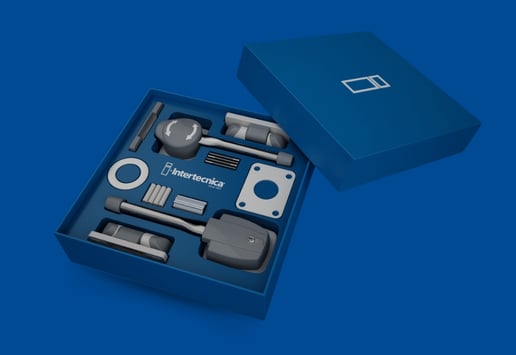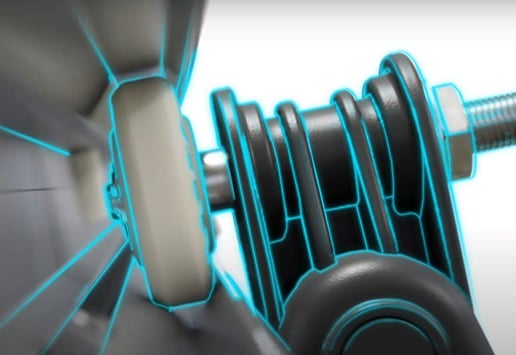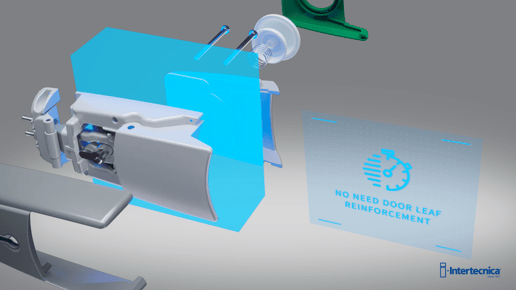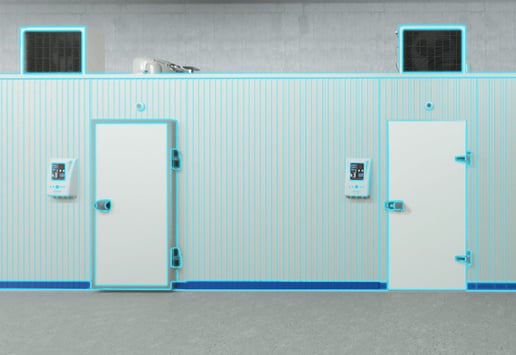A cold room must have a well-performing door for it to be fully functional and energy-efficient. The door, in fact, is the part of the cold room most prone to stress, since it can be opened and closed even hundreds of times a day. In order to make the most of your cold room over time and exploit its insulating power to reduce energy consumption, you need to obtain the most suitable door for the purpose and choose high quality hinges, ramps and handles. Here are the main types of door available on the market.
Insulating and semi-insulating doors
Cold room doors can be insulating – i.e. capable of thermally insulating the room – or semi-insulating – i.e. used only for logistical reasons and for regulating passage.
A semi-insulating door, as the name suggests, does not guarantee specific performance in terms of cold resistance; for example, it can be a single or double-leaf door separating a cold room from an environment that does not have to be kept at a predefined temperature, such as an office. Another example is a to-and-fro door for a room that needs to be separated for logistical and regulatory reasons, such as an area where different types of food are processed in an agri-food company. In all these cases, semi-insulating doors are not designed to keep out the cold.In fact, it is sometimes the very regulations that prescribe that they close incompletely: this is the case with doors that must, by law, be equipped with devices that prevent crushing of the fingers of operators, and therefore never achieve complete insulation of the environment.
Insulating doors, on the other hand, are capable of guaranteeing a certain level of cold-proofing, and are divided into low-temperature insulating doors, to keep the temperature inside the cold room below zero, and normal-temperature insulating doors (above zero). The thickness of the door insulation is defined during the design phase according to the required level of cold-proofing, and can vary from 60 to 200mm depending on the temperature to be reached.
Irrespective of the thickness of the door, high-performance components must always be used to ensure that the door works properly: the latch, gaskets, hinges and ramps are those parts that constantly withstand the stresses to which the door is subjected, and their efficiency is essential to guarantee sufficient cold-proofing and to avoid wasting energy.
How to choose the right type of insulating door for your needs
Insulating doors, regardless of the temperature they must be able to maintain inside the cold room, are divided into two main types:
- Hinged (single or double leaf)
- Sliding (single or double leaf)
The preference for a specific type of model depends essentially on the availability of space and logistical choice. A sliding door is more suitable in the case of a corridor, since a hinged door would reduce or obstruct the space required for passage; while a hinged door (perhaps with two leaves) may be the only solution if the walls of the cold room are not large enough to allow the door to slide. A sliding door is generally preferable in cases where the space to be closed is particularly large or when bulky pallets have to be taken in and out and which may be difficult to move when there is a hinged door in the way. All these aspects must be considered with care during the design phase, in order to select the type of door best suited to the specific characteristics of the environment in which it will be used.
The use of automation systems to regulate the opening and closing of doors is another important aspect to be taken into account during the design phase. An automation system can in fact be particularly convenient if the door is to be of medium or large size, or has to be opened and closed very frequently. In fact, the automatic opening and closing system not only protects the door from impacts, but also guarantees better cold-proofing and therefore greater energy efficiency, since it ensures that the door is always closed correctly, which is not always the case with manually operated doors.
Don't miss out on the latest news from the world of Intertecnica.
The maintenance of insulating doors
In order to keep an insulating door perfectly efficient at all times, it is important to try to minimise the shocks to which it is subjected, bearing in mind however that a certain amount of stress is unavoidable.
Intertecnica develops its products with the aim of best reducing the need for intervention on the various components of the door, and offering its customers solutions that are completely maintenance-free. In the case of hinges and ramps, for example, the use of special self-lubricating materials such as acetal resin avoids the need to manually lubricate the components, without affecting efficiency of the door as a whole.
Traces of dust, dirt or other foreign bodies can make an insulating door less efficient: which is why Intertecnica has also designed the components to be ergonomic and easy to clean.

